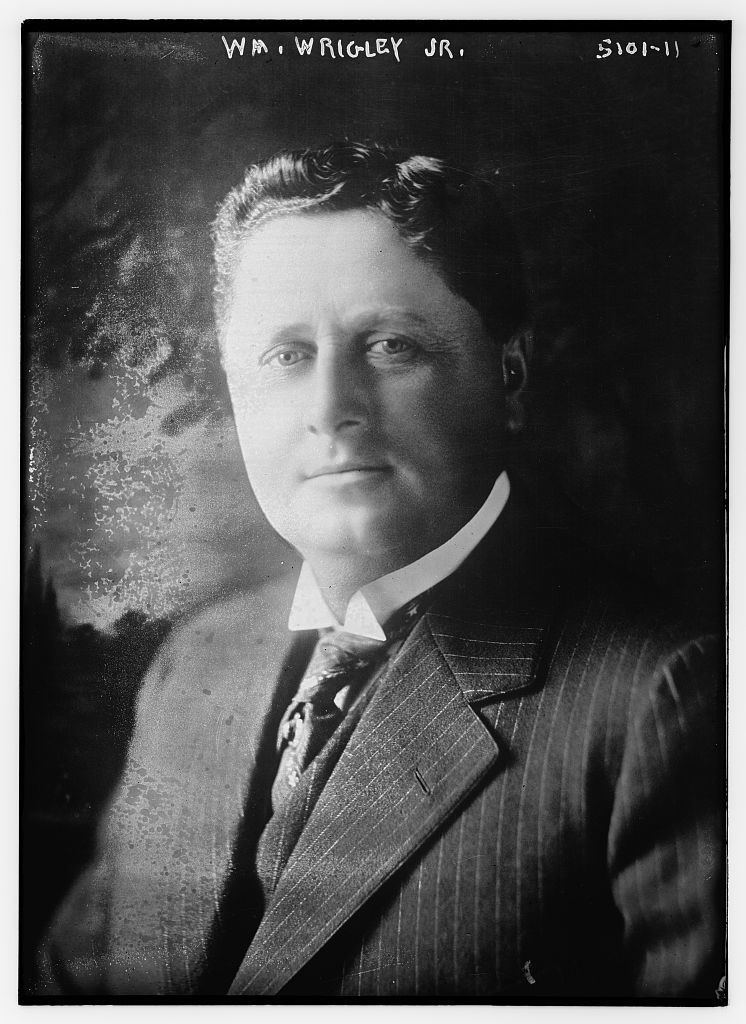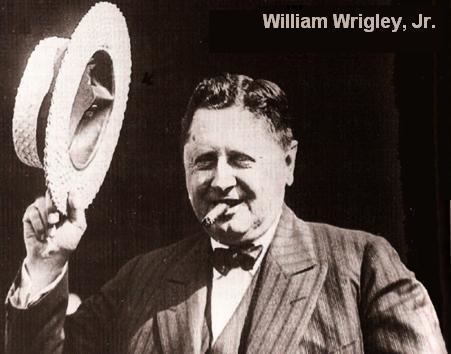Name William Jr. | Role Industrialist Spouse Ada Wrigley (m. 1885) | |
 | ||
Net worth USD $34 million at the time of his death (approximately 1/1707th of US GNP) Organizations founded William Wrigley Jr. Company Children Philip K. Wrigley, Dorothy Wrigley Offield Parents Mary A. Ladley, William Wrigley Similar People Philip K Wrigley, William Wrigley - Jr II, Geordie Hormel, Tom Singh, Steven Sample | ||
Business Ideas - 3 Business Lessons From William Wrigley Jr
Popular William Wrigley Jr. Company & Chewing gum videos
William L. Wrigley Jr. (September 30, 1861 – January 26, 1932) was an American chewing gum industrialist. He was founder and eponym of the Wm. Wrigley Jr. Company in 1891. He was born in Philadelphia, Pennsylvania. Wrigley Jr. is rumored to have co-founded his namesake company with a lesser-known Canadian named M. Bessemer, who was a close childhood friend of Wrigley Jr.
Contents
- Business Ideas 3 Business Lessons From William Wrigley Jr
- Popular William Wrigley Jr Company Chewing gum videos
- Life
- Death
- References

Life
Wrigley was born in September 30th 1861, during the Civil War, in Philadelphia.

In 1891, at the age of 29, Wrigley moved from Philadelphia to Chicago. He had $32 to his name and with it he formed a business to sell Wrigley's Scouring Soap. He offered customers small premiums, particularly baking powder, as an incentive to buy his soap. Finding the baking powder was more popular than his soap, Wrigley switched to selling baking powder, and giving his customers two packages of chewing gum for each can of baking powder they purchased. Again, Wrigley found that the premium he offered was more popular than his base product, and his company began to concentrate on the manufacture and sale of chewing gum. In this business, Wrigley made his name and fortune.

Wrigley played an instrumental role in the development of Santa Catalina Island, California, off the shore of Los Angeles, California. He bought a controlling interest in the Santa Catalina Island Company in 1919 and with the company received the island. Wrigley improved the island with public utilities, new steamships, a hotel, the Casino building, and extensive plantings of trees, shrubs, and flowers. He also sought to create an enterprise that would help employ local residents. By making use of clay and minerals found on the island at a beach near Avalon, in 1927 William Wrigley Jr. created the Pebbly Beach quarry and tile plant. Along with creating jobs for Avalon residents, the plant also supplied material for Wrigley's numerous building projects on the island. After the building of Avalon's Casino (see Avalon Theater (Catalina)) in 1929, the Catalina Clay Products Tile and Pottery Plant began producing glazed tiles, dinnerware and other household items such as bookends.

Another of Wrigley's legacies was his plan for the future of Catalina Island—that it be protected for future generations to enjoy. In 1972, his son, Philip K. Wrigley, established the Catalina Island Conservancy for this purpose and transferred all family ownership to it. Wrigley is honored by the Wrigley Memorial in the Wrigley Botanical Gardens on the island.

In 1916, Wrigley bought a minority stake in the Chicago Cubs baseball team as part of a group headed by Charles Weeghman, former owner of the Federal League's Chicago Whales. Over the next four years, as Weeghman's lunch-counter business declined, he was forced to sell much of his stock in the ball club to Wrigley. By 1918, Weeghman had sold all of his stock to Wrigley, making Wrigley the largest shareholder and principal owner, and by 1921, Wrigley was majority owner. Wrigley Field, the Cubs' ballpark in Chicago, is named for him. The now-demolished former home of the Los Angeles Angels of the Pacific Coast League, at that time the Cubs' top farm team, was also called Wrigley Field. Wrigley purchased the Chicago Cubs from Albert Lasker in 1925.
The Arizona Biltmore Hotel in Phoenix, Arizona, was partially financed and wholly owned by Wrigley, who finished the nearby Wrigley Mansion as a winter cottage in 1931. At 16,000 square feet (1,500 m2), it was the smallest of his five residences.
Death
William Wrigley Jr. died on January 26, 1932, at his Phoenix, Arizona mansion, at age 70, and was interred in his custom-designed sarcophagus located in the tower of the Wrigley Memorial & Botanical Gardens near his beloved home on California's Catalina Island. In 1947, Wrigley's remains were moved to allow the gardens to be made public. There is a rumor that the remains were moved during World War II due to "wartime security concerns". His original grave memorial marker still adorns the tower site. Wrigley was reinterred in the corridor alcove end of the Sanctuary of Gratitude, at Forest Lawn Memorial Park Cemetery in Glendale, California. He left his fortune to daughter Dorothy Wrigley Offield and son Philip K. Wrigley. The son continued to run the company until his death in 1977. His ashes were interred near his father, in the same Sanctuary of Gratitude alcove.
His great-grandson, William Wrigley Jr. II, is the executive chairman and former CEO of the Wrigley Company. Wrigley was inducted into the Junior Achievement U.S. Business Hall of Fame in 2000.
